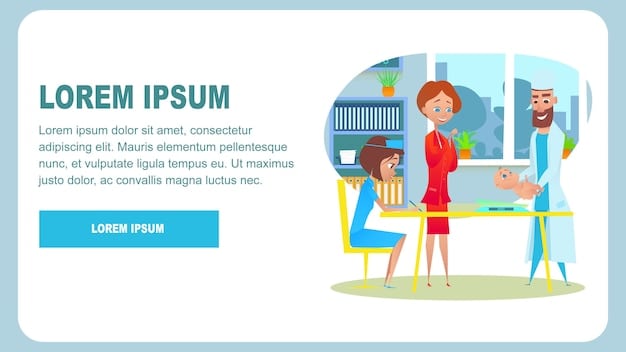How to Choose the Right Health Insurance Plan for Your Family in 2025

Choosing the right health insurance plan for your family in 2025 involves understanding different plan types, assessing your family’s healthcare needs, comparing costs, and anticipating potential changes in healthcare regulations.
Navigating the complexities of health insurance can feel overwhelming, especially when you’re trying to find the perfect fit for your family. As we look ahead to 2025, understanding **how to choose the right health insurance plan for your family’s needs** becomes even more critical. With potential changes in healthcare policies and the ever-evolving landscape of insurance options, being informed is your best tool.
Understanding the Basics of Health Insurance Plans
Before diving into the specifics of plans available in 2025, it’s essential to grasp the fundamental types of health insurance plans. Each type offers different levels of coverage, flexibility, and cost-sharing, impacting your family’s access to healthcare services and overall financial burden.
Common Types of Health Insurance
Health insurance plans generally fall into several categories, each with its unique structure and approach to healthcare coverage:
- Health Maintenance Organization (HMO): HMOs typically require you to choose a primary care physician (PCP) who manages your care and provides referrals to specialists within the network.
- Preferred Provider Organization (PPO): PPOs offer more flexibility, allowing you to see specialists without a referral and providing coverage for out-of-network care, albeit at a higher cost.
- Exclusive Provider Organization (EPO): EPOs resemble HMOs in network limitations but generally don’t require a PCP referral for specialist visits. Out-of-network care is usually not covered, except in emergencies.
- Point of Service (POS): POS plans blend features of HMOs and PPOs, requiring a PCP referral to see specialists but also allowing out-of-network care, though with higher out-of-pocket expenses.
Understanding these plan structures is essential for evaluating which one aligns best with your family’s healthcare requirements and financial situation. The right choice depends on balancing cost considerations with the need for flexibility and access to specialized care.
In conclusion, knowing the basics of each healthcare plan, like HMO, PPO, and EPO, is valuable to understanding what will be a good fit for your family.
Assessing Your Family’s Healthcare Needs
Choosing the right health insurance isn’t a one-size-fits-all solution. It requires a thorough assessment of your family’s specific healthcare needs. Consider existing health conditions, anticipated medical services, and preferences for access to specialists and facilities.
Factors to Consider for Family Healthcare Needs
When evaluating healthcare needs, consider the following:
- Existing Health Conditions: Chronic illnesses or ongoing medical treatments require plans with comprehensive coverage for prescription medications, specialist visits, and other related services.
- Anticipated Medical Services: If you anticipate needing specific medical services, such as maternity care or surgeries, ensure the plan offers adequate coverage for these services.
- Preferred Doctors and Facilities: If you have established relationships with specific doctors or prefer certain hospitals, verify that they are in-network providers within the plan’s network.

By carefully assessing these factors, you can identify the type and level of coverage that best meet your family’s healthcare needs and prioritize plans that offer the necessary benefits and access to care.
By thinking about your family’s healthcare needs, you can better choose the best one for your family.
Understanding Costs: Premiums, Deductibles, and Co-pays
The cost of a health insurance plan isn’t just the monthly premium. You’ll need to understand deductibles, co-pays, and coinsurance to get a true picture of potential out-of-pocket expenses. Balancing costs with coverage is a critical part of the decision-making process.
Breaking Down Health Insurance Costs
Different types of costs that come with different insurance plans:
- Premiums: is your monthly health insurance payment.
- Deductibles: This is how much you pay out-of-pocket before your health insurance starts paying for covered services.
- Co-pays: flat fee you pay for certain healthcare services, such as doctor’s appointments or prescription refills.
By carefully evaluating these cost factors, you can select a health insurance plan that aligns with your budget and minimises unexpected out-of-pocket expenses. Consider not only the monthly premium but also the potential impact of deductibles, co-pays, and coinsurance on your overall healthcare spending.
In conclusion, health insurance can be expensive, so look at all costs and pick the right one for your budget.
Exploring Different Plan Options Available in 2025
The health insurance landscape is constantly evolving, especially with the continuous reforms and market dynamics. In 2025, there’re expect a variety of plan options, driven by healthcare regulations, insurance market competition, and consumer preferences. Understanding different plans helps to enable families to to find the right option.
Key Plan Options to Consider
Different plans to consdier are:
- Employer-Sponsored Plans: Many families get coverage through their employers, so explore options on the marketplace.
- Marketplace Plans: compare plans, check premium costs, available subsidies, and covered benefits.
- Government Programs: Families also may qualify for health coverage through govenrment programs
By exploring these options, families can compare costs, benefits, and coverage levels to make informed decisions that align with their specific needs.

In conclusion, it’s vital to research and pick the right one to get a good fit.
Evaluating Network Coverage and Provider Access
An insurance plan’s network determines where you can receive covered healthcare services. Evaluate whether your preferred doctors, specialists, and hospitals are in-network to avoid higher out-of-pocket costs. Consider the convenience of locations and the availability of specialized care within the network.
Factors to Consider for Evaluating Network Coverage
Evaluate these factors to get the plan with the best insurance coverage:
- In-Network Providers: Make sure that the providers your family prefers are in the network.
- Out-of-Network Coverage: Many plans offer coverage for out-of-network services, but often at a higher cost-sharing rate. Consider if such services will be useful or needed.
- Geographic Access: It’s important that the insurance provides access to nearby medical services and that it’s available to everyone.
Network coverage is paramount when choosing a health insurance plan for you family. Ensure that it includes access to preferred doctors, specialists, and facilities convenient to your location.
In conclusion, before picking a health insurnace, determine that it has the the things you and your family need.
Making the Right Choice and Staying Informed
Choosing a health insurance plan for your family is not a one-time decision. Stay informed about changes in healthcare laws, insurance options, and your family’s evolving needs. Review your coverage annually to ensure it continues to meet your family’s healthcare needs.
Tips for Staying Informed and Making Informed Decisions
Understand:
- Regularly Review Coverage: Assess your healthcare plan often and make sure it is the best one.
- Follow Healthcare News: Stay up-to-date on the latest healthcare news and trends.
- Seek Expert Advice: When in doubt, you can talk to an expert and get help from them.
You must make an effort to be as informed as possible when it comes to making the correct decisions for health insurance. It’s an ongoing path that requires research and adaptability to guarantee your family’s well-being and financial stability.
Health insurance is not an easy thing to do, but in the end, it’s important to be informed.
| Key Aspect | Brief Description |
|---|---|
| 🩺 Healthcare Needs | Consider existing conditions and anticipated medical services. |
| 💰 Costs | Understand premiums, deductibles, co-pays, and coinsurance. |
| 🌐 Network Coverage | Ensure your preferred doctors are in-network. |
| 🔄 Stay Informed | Healthcare laws change, so keep up with current reforms with regular research. |
FAQ
▼
A health maintenance organization is a type of health insurance plan that typically requires you to choose a primary care physician (PCP) who coordinates your care and provides referrals to specialists within the network.
▼
Preferred Provider Organization offers more flexibility, allowing you to see specialists without a referral. It also provides coverage for out-of-network care, though typically at a higher out-of-pocket cost.
▼
Premiums are the monthly payments you make to maintain health insurance coverage. These payments are typically fixed and must be paid regularly, regardless of whether you utilize healthcare services during that period.
▼
Co-pays are flat fees you pay for certain healthcare services, such as doctor’s appointments or prescription refills. Co-pays are typically due at the time of service and often vary depending on the type of service.
▼
Deductibles represent the amount you must pay out-of-pocket for covered healthcare services before your health insurance plan starts paying. Deductibles reset annually and can vary widely depending on the plan.
Conclusion
Choosing the right health insurance plan for your family in 2025 requires a comprehensive and thoughtful approach. By understanding different plan types, assessing your family’s healthcare needs, evaluating costs, and prioritizing network coverage, you can make informed decisions that provide financial security and peace of mind as you navigate medical services for yourself and your loved ones. Staying informed and regularly reviewing your coverage will ensure that your health insurance plan remains a valuable resource for your family’s health and well-being.





